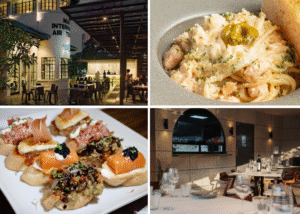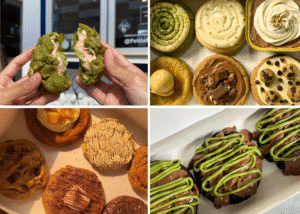The restaurant industry in Singapore is rapidly evolving, driven by technological advancements and changing consumer preferences. One significant shift is the increasing adoption of cloud-based restaurant online ordering systems. Unlike traditional ordering platforms, cloud solutions offer superior scalability, seamless integration, and advanced data insights that empower F&B operators to stay competitive in a bustling market.
Overview of Traditional vs Cloud-Based Restaurant Online Ordering Systems
Limitations of Traditional Online Ordering Systems in Singapore
Traditional online ordering systems in Singapore often struggle with scalability, especially during peak hours or promotional periods. They require manual integration efforts to synchronize orders from popular aggregators like GrabFood and Foodpanda. This fragmentation leads to possible order mismanagement, overselling, and customer dissatisfaction.
Core Features of Cloud-Based Ordering Platforms
Cloud-based platforms provide real-time updates, allowing restaurant operators to react quickly to order changes. These systems feature scalable cloud infrastructure that supports rapid growth and multiple outlets. Seamless integration with Order Management Systems (OMS) and Point of Sale (POS) systems centralizes order handling, reduces errors, and improves operational efficiency.
How Cloud Ordering Platforms Enable Seamless Integration with Multiple Aggregators
Real-Time Order Sync and Inventory Management
Cloud ordering systems sync orders and inventory data instantly across all delivery aggregators such as GrabFood, Foodpanda, and Deliveroo. This real-time synchronization prevents overselling, ensuring stock availability is accurate and customers receive their orders without delays.
Streamlining Delivery Coordination
A unified cloud platform simplifies delivery coordination by consolidating all orders into a single dashboard. This reduces last-minute cancellations and enhances communication between kitchen and delivery teams, ultimately improving customer satisfaction.
Embracing Contactless Ordering and Payment in Singapore’s Post-Pandemic Era
Contactless Ordering Through QR Codes and Mobile Apps
Post-pandemic, contactless ordering has become essential for safety and convenience. Many Singaporean F&B brands utilize cloud-based platforms to implement QR code menus and dedicated mobile ordering apps, allowing customers to place orders directly from their smartphones without physical menus or cashier interaction.
Secure Contactless Payments Integration
Integration with popular e-wallets such as GrabPay and PayNow accelerates payment processing, enhances transaction security, and caters to Singapore’s increasingly cashless society. Cloud systems facilitate smooth, secure, and fast contactless payments, improving the overall dining experience.
Leveraging Data Insights from Cloud Systems to Boost Customer Retention
Analyzing Customer Ordering Patterns
Cloud platforms collect valuable data on customer preferences and ordering behavior. Restaurants can analyze this data to customize menus, optimize inventory, and create targeted marketing campaigns that resonate with their audience.
Implementing Targeted Promotions and Loyalty Programs
Integrated CRM tools within cloud OMS enable businesses to execute personalized promotions and loyalty programs effectively. These strategies foster repeat business and strengthen customer relationships by rewarding frequent diners and encouraging regular engagement.
Scalability and Future-Proofing Your Restaurant Operations with Cloud Technology
Cloud-based online ordering systems support seamless expansion, whether opening new outlets or scaling menu offerings. Their flexibility adapts to market trends and new technologies, future-proofing restaurant operations in Singapore’s dynamic foodservice industry.
Choosing the Right Cloud-Based Online Ordering System for Your Singapore F&B Brand
When selecting a cloud-based ordering system, consider key factors such as:
- Integration capability with existing OMS and POS systems
- Support for multiple food delivery aggregators
- Advanced data reporting and analytics features
- Contactless ordering and payment functionalities
- Scalability to support business growth
Choosing the right system tailored to your operational needs can significantly enhance efficiency and customer satisfaction.
Frequently Asked Questions
What are the main benefits of a cloud-based online ordering system over traditional platforms?
Cloud-based systems offer greater scalability, real-time order management, seamless integration with multiple delivery aggregators such as GrabFood and Foodpanda, and advanced data analytics to optimize operations and marketing.
How do cloud ordering platforms help reduce cancellations on GrabFood and Foodpanda?
By synchronizing orders and inventory in real-time, cloud platforms prevent overselling and order mismanagement, which decreases cancellations and improves accuracy.
Can cloud systems integrate with existing POS and OMS solutions?
Yes, integration capability is essential for streamlined operations. Cloud platforms unify order data and reporting across OMS and POS systems, enhancing efficiency.
How does contactless ordering through cloud systems improve customer experience?
Contactless ordering provides convenience, faster service, and improved health safety via QR code menus and mobile apps, popular among Singapore restaurants.
In what ways can restaurants use data from cloud ordering systems for customer retention?
Restaurants analyze purchase history to personalize offers, target promotions, and manage loyalty programs, encouraging repeat business and customer loyalty.



